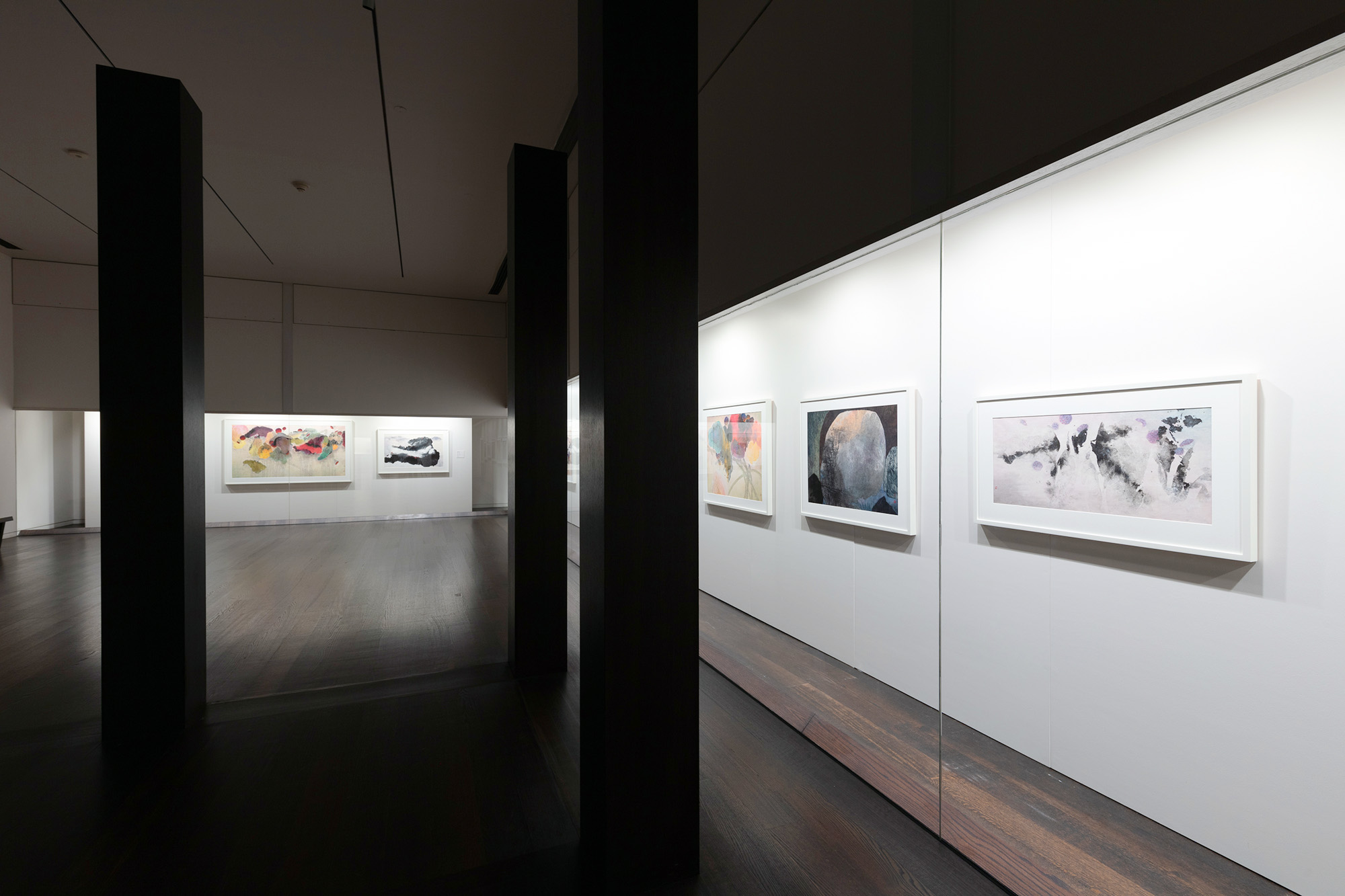Shows
Expressive Ink: Paintings by Yang Yanping and Zeng Shanqing


“Expressive Ink,” at the Art Institute of Chicago’s Ando Gallery, featured 16 paintings by Yang Yanping and eight by her husband, Zeng Shanqing, predominantly created after the couple’s emigration from China to the United States in 1986. Yang’s characteristic flush of naturalistic motifs appeared alongside Zeng’s vigorous images of figures and horses. The curatorial decision to devote separate displays to each artist demonstrated the strength of their oeuvres independent of their life partnership.
In China, in the early ’80s, Yang and Zeng hosted the art historian and curator Joan Lebold Cohen, who later identified the pair as important figures among the younger generation of pioneering ink artists in her influential 1987 book The New Chinese Painting 1949–1986. While their predecessors, such as Xu Beihong and Liu Haisu, developed their styles before the communist takeover in 1949, Yang and Zeng came of age under Mao Zedong, and were limited as artists to the Social Realist genre. Tyranny during their formative years would not stop the bloom of their expression, however.
Only one painting, among the smallest on view, recalled the artists’ lives prior to emigrating: Yang’s Towering Mountain (1980). Rendered in a subdued palette, the hanging scroll depicts lithic textures lightly overgrown with spindly filaments—part of a visual vocabulary that is manifest in Yang’s later depictions of abstracted flowers.
The artist’s fascination with natural subjects had begun in 1978, when Yang spotted a fading lotus, and in it found her most enduring muse. Yet, it was not until after she arrived in the US that she fleshed out her signature aesthetic, blending classical Chinese ink painting with neoimpressionism, as well as the gestural style of her Western contemporaries. Furthermore, Yang’s penchant for autumnal or wintry seasonal landscapes demonstrated a break from traditional Chinese paintings of flora in full bloom. Brilliant Autumn (1993) exemplifies Yang’s talent for interpreting floral decay through pellucid washes of tonal composition, with ink dissonances of deep crimson puddles and splotches of sun yellow that bleed into ripples of gray-green smudges. With confounding ingenuity, every petal is carefully defined. Spring Snow (2002), meanwhile, evokes an otherworldly approach to form, featuring two gushes of black that redden at their softening edges and resemble anthropomorphic bodies kissing underwater.
Zeng’s creative trajectory also took a distinctive turn post-emigration. He had studied under Xu Beihong, the renowned painter of horses, but Zeng only took these animals as his subjects later in his career. Horse Face and Control (both 2007), rendered in Zeng’s semi-abstract style of broad, airy strokes, both convey confrontation with power, a theme perhaps born of the artist’s internment at a labor camp during the Cultural Revolution for the crime of “uglifying” workers and Mao in his paintings. Horse Face demonstrates Zeng’s courage to look bestial might in its black eyes, to be unshaken by its bodiless, ghostly aura, while Control shows a bucking horse vying for freedom as a man tugs at its reins. Elsewhere, Three Nos (1998) lent itself to more direct political interpretation. In this work, a trio of faces are shown with hands covering their mouth, eyes, and ears in an allusion to censorship.
Eschewing a linear chronology, the show instead brought visual juxtapositions and common thematic threads to the fore. Yang’s dusky purplish Winter Fog (2018) hung beside her similarly toned Rock (1989). Zeng’s wide proportions recurred in Sleep (2010), of an old slumbering man, and the adjacent Laugh (2001), of a happy sage.
In our conversation, co-curator Colin C. Mackenzie remarked: “Both of them were in a sense ahead of their time. Both have played crucial roles in modernizing the traditional medium of brush and ink.” Mackenzie noted that though Chinese landscape painting had approached abstraction from the Ming dynasty, Yang and Zeng balance the figurative and abstract with peerless invention in their approach to the “boneless” technique, essentially avoiding black outlining. Yet their debt to traditional Chinese painting is evident—as a final flourish, both stamp their works with seals instead of signing, like most Western contemporary artists.
“Can one continue to create Chinese art in exile?” Mackenzie continued. “Their answer is a resounding yes.”
“Expressive Ink: Paintings by Yang Yanping and Zeng Shanqing” is on view at the Art Institute of Chicago until November 10, 2019.







